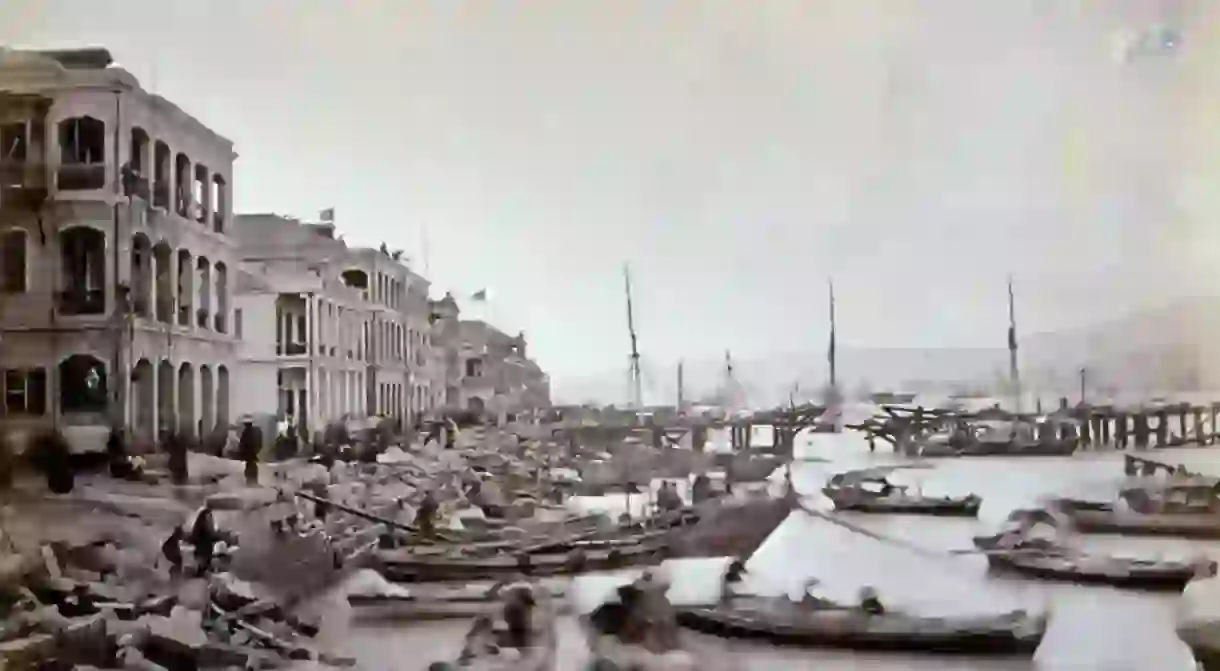Hong Kong Then And Now: Interview With Vaughan Grylls

Vaughan Grylls is an acclaimed British sculptor and fine art photographer whose career spans over 50 years. He is the author of the Then and Now photo book series, with the latest volume Hong Kong Then And Now published this year. The book brings together 80 pairs of photographs, contrasting old colonial buildings with present-day views taken from the same locations. It’s a fascinating documentation of Hong Kong‘s fast-paced change. The Culture Trip caught up with Grylls to talk about his new book.
Queen’s Road Central – 1895 and Present Day


Can you describe the whole process of putting the book together? How long did it take?
It took about a year. First of all, old photographs of Hong Kong were researched and I must have looked at 1,000 or so but around 80 images made the final cut; an agonizing process. How do you choose between 20 images of, say, the waterfront in Central?
The answer is you have to think of choosing 80 images in total, which represent photographically-recorded time from the earliest photographs taken in the 1840s to the latest ones that can be considered ‘historic’, such as the 1980s. So it may be that the image I chose for this example, I also chose to represent the 1890s. Then I had to take the Now photographs and write the book, so although the images and captions were individual, the book itself flowed as some sort of narrative.
View of Victoria Harbour – 1965 and Present Day


When you shot the Now photos, how much did your consciousness of the Then photos affect your decisions?
I had to choose Then photos where there was still some vestige of the past left today. Where all old buildings had totally disappeared – and there were many occasions – this meant finding the same topography. One example of this is Wellington Street, which is very straight and slopes upwards in the Then photograph.
Kowloon Terminus – 1954 and Present Day


Can you compare the Hong Kong Then And Now series with your other Then and Now photography projects? Is there anything that strikes you about Hong Kong in particular?
It has to be the evidence of frenetic change. Even when I did Singapore Then and Now, the evidence of change was not nearly so dramatic.
Peak Tram – 1930 and Present Day


What do you think these photos show about how Hong Kong has changed over the years?
Hong Kong exhibits an energy like no other city. This started around 1949 or 1950 with the influx of many Shanghainese and Cantonese immigrants from the mainland and has continued to this day, although it has slowed in recent years. Today Hong Kong’s challenge is not to be eclipsed as a world-class business centre by other Chinese cities such as Shanghai, Shenzhen or Guangzhou. In particular it should watch out for the world’s most populous city, Shanghai – my next Then and Now, by the way!
Star Ferry – 1949 and Present Day


Do you have a favourite Then and Now pair and why?
Pedder Street because it shows the complete change in architecture and the reclamation of the shoreline in one and there’s a nod to the past in the passing tram. Another is Lantau Island, the 1968 Then gives a good semblance of how Hong Kong Island must once have looked when the British took control in 1841. Beautiful.
Pedder Street – 1863 and Present Day


Do you think photographs are good recorders of history?
Yes!
When it comes to Hong Kong’s rapid change, there’s a tension between the nostalgia of the past and the excitement that comes with evolution. How do you think your photos address that tension?
I’ve tried to address that issue. Although my book is, on the face of it, merely about the past and present as evidenced by photographs, it is at a deeper level also about the people of Hong Kong – how Hong Kongers and those who love Hong Kong have and haven’t changed in their desires, interests and challenges.
Nathan Road – 1961 and Present Day















